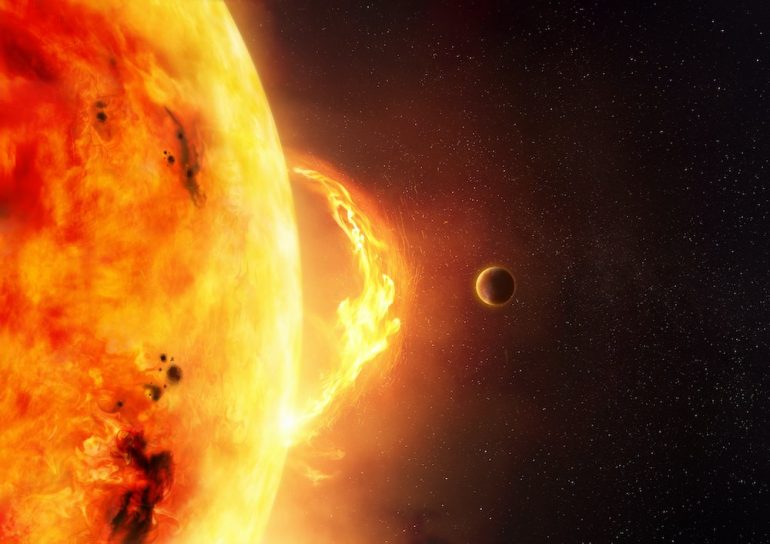BC Hydro says it is preparing for a geomagnetic storm this week that has affected communications in the province in the past.
According to the National Oceanic and Atmospheric Administration, a G3 (Strong) and G2 (Moderate) geomagnetic storm is possible on Thursday, Dec. 10 and Friday, Dec. 11, respectively.
However, BC Hydro spokesperson Mora Scott tells Vancouver Is Awesome in an email that NOAA “downgraded the storm.” Nevertheless, she says the company always prepares for geomagnetic storms.
“These types of storms go through 11-year cycles with about 100 events ranging in intensity happening over a decade,” writes Scott.
The NOAA describes a geomagnetic storm as a disturbance of Earth’s magnetosphere that “occurs when there is a very efficient exchange of energy from the solar wind into the space environment surrounding Earth.”
The largest storms are caused by “coronal injections” from the sun.
Power outages and damage from geomagnetic storms
“Geomagnetic storms can cause serious damage to high voltage transmission systems, leading to outages. For example, in the late 80s one left all of Quebec without power for about 9 hours,” explains Scott.
With this in mind, Scott says BC Hydro hasn’t experienced any damage due to these storms for 30 years, “And we don’t expect this storm to be any different.”
In order to protect its grid, BC Hydro tracks space weather forecasting to prepare for geomagnetic storms.
“We protect our system by using series capacitors on most of our large transmission lines, which provide a barrier to the geomagnetically induced currents’ path and prevent the spread of any disturbances in our system,” she explains.
And while BC Hydro customers can’t specifically prepare for solar magnetic storms, Scott encourages them to prepare for outages: “They should have a fully stocked emergency kit with things like a flashlight, extra batteries, first aid kit, food and water.”
Build an emergency kit for the first 72 hours
If the lights go out, the last thing you want is to be scrambling for supplies. You may have some of the items already, such as a flashlight, battery-operated radio, food, and water. The key is to make sure they are organized and easy to find. Would you be able to find your flashlight in the dark?
Make sure your kit is easy to carry. Keep it in a backpack, duffel bag or suitcase with wheels, in an easy-to-reach, accessible place, such as your front hall closet. Everyone in your home should know where your emergency kit is stored. Remember to pull out your emergency kit once a year and make sure it still fits the needs of your household and replace any items that you may have used or expired.
Find out more information about building an emergency kit here.

Devoted web advocate. Bacon scholar. Internet lover. Passionate twitteraholic. Unable to type with boxing gloves on. Lifelong beer fanatic.





